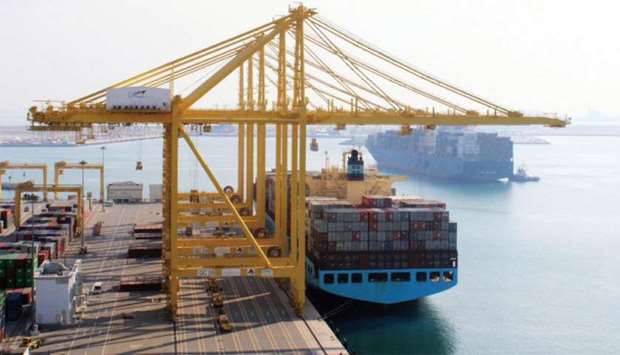The 403,500 sqm container terminal 2 (CT2) at the Hamad Port is slated to be operationalised by the end of fourth quarter (Q4) of this year.
"On track for start of operations in late Q4 2020," said a tweet from the QTerminals, a terminal operating company jointly established by Mwani Qatar (51%) and Milaha (49%).
The works on CT-2 had begun in December last year as part of Qatar's expansion strategy in its maritime sector.
The CT2, with berth length of 1,200m and a 17m draft alongside, will have annual capacity of 2mn TEUs (twenty-foot equivalent units).
The CT-2 development at Hamad Port is located immediately to the north of the existing Container Terminal – 1. QTerminals provides container, general cargo, RORO, livestock and offshore supply services in Phase 1 of Hamad Port.
The Phase I of Hamad Port consists of CT1, the general cargo terminal, the multi-user terminal, which handles Ro-Ro for vehicles, machinery, and live animals, and the offshore supply services terminal
Considering the sustained growth outlook of Qatar, both CT2 and CT1 are expected to give a big push to the domestic economy in the medium to long term, industry insiders said, highlighting that the port’s throughput is estimated to be roughly 1.5 times gross domestic product or GDP.
Amidst disruptions caused by pandemic Covid-19, Qatar will be the only economy in the Middle East and North Africa including Pakistan (MENAP) region to show fiscal surplus this year and in 2021, according to the International Monetary Fund (IMF).
Qatar’s expected 5% growth in 2021 is in contrast to an estimated 4.3% decline this year on account of pandemic Covid-19. The IMF’s forecasted real economic growth in 2021 is better than the 4.7% averaged for the MENAP region.
Modelled as a transshipment hub, Hamad Port has already transshipped containers to other locations as Iraq, Kuwait, and the sub-continent.
Hamad Port has significant scope for growth and innovation and QTerminals, as the operator of Phase 1 and the developer of Phase 2, has potential to establish and maintain stronger maritime trade to stimulate economic growth locally, regionally, and internationally.
Hamad Port, Qatar’ gateway to world trade, handles general cargo, livestock, automobiles, and bulk grain. Its strategic geographical location offers opportunities to create cargo movement towards the upper Gulf, supporting countries such as Kuwait and Iraq, and south towards Oman, according to Neville Bissett, QTerminals chief executive.
Qatar's maritime sector continued to be busy, amidst the Covid-19, as more vessels called on Hamad Port.
According to the Planning and Statistics Authority's latest monthly statement, Hamad Port had seen 140 vessels berthed and net tonnage was 2.52mn tonnes in March 2020.
The number of vessels calling on Hamad Port witnessed a 6.1% and 7.7% increase year-on-year and month-on-month respectively this March.
The net tonnage had seen a 3.1% year-on-year decline but grew 7.2% on a monthly basis in March this year.


